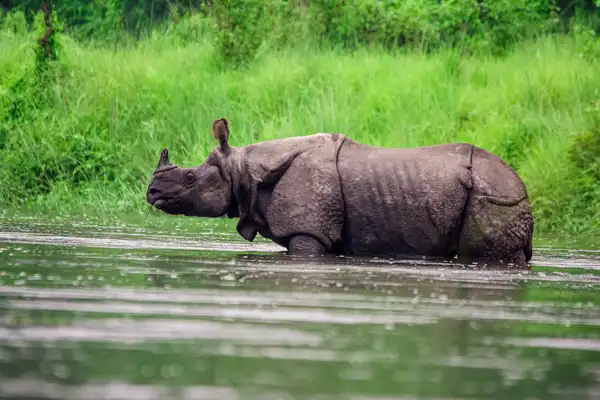Wild Life Licensing Rules 2024 or the Wild Life (Protection) Licensing (Additional Matters for Consideration) Rules, 2024, were notified recently by central government, marking the first revision since 1983.
Key provisions of Wild Life Licensing Rules 2024:
Exclusion of Certain Species:
- The revised rules exclude certain species from the licensing process for wildlife trade.
- The government notification specifies guidelines for snake venom, captive animals, trophy animals, and stuffed animals.
Previous Licensing Restrictions:
- The rules from 1983 prohibited issuing licenses for trading in wild animals categorized under Schedule I or Part II of Schedule II under the Wildlife Protection Act 1972.
- Licenses were granted in exceptional cases with the prior approval of the central government.
Revised Guidelines:
- Under the new guidelines, licenses related to wild animals specified in Schedule I to the Wildlife Protection Act will not be granted except with the previous consultation of the central government.
- The rules emphasize the need for considering the capacity of applicants in terms of facilities, equipment, and feasibility of premises.
- Source and manner of obtaining supplies, existing licences in the concerned area, and implications on hunting or trade must be considered before granting a licence.
Unclear Exclusion of Schedule II Species:
- The notification does not clarify why restrictions on Schedule II species have been lifted.
- The 2022 amendment rationalized Wildlife Protection Act schedules, with Schedule II still containing crucial species of mammals, birds, reptiles, and amphibians.
Revised Wildlife Protection Act Schedules:
- The schedules of the Wildlife Protection Act were rationalized in an amendment in 2022.
- The original law had six schedules, including specific categories for endangered species, non-endangered species, vermin, and plant species.
- Schedule I includes animals requiring utmost protection.
- Schedule II has species needing comparatively lower protection.
- Plant species are listed under Schedule III.
- Schedule IV is dedicated to species protected under the Convention on International Trade in Endangered Species of Wild Fauna and Flora (CITES).
Wildlife Protection Act 1972 – Schedule II Species:
- Birds such as sparrows, bulbul, ducks, geese, owls, kites, eagles, falcons, and prinias.
- Reptiles such as snakes and turtles.
- Mammals including deer, hare, rats, langur.
- Amphibians like geckos and frogs.
Other key facts:
Global Seizures of Flora and Fauna:
- According to the World Wildlife Report 2020, around 6,000 species of flora and fauna were seized globally from 1999-2018.
Ref: Source
| UPSC IAS Preparation Resources | |
| Current Affairs Analysis | Topperspedia |
| GS Shots | Simply Explained |
| Daily Flash Cards | Daily Quiz |



